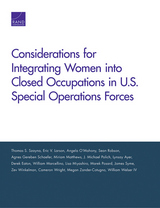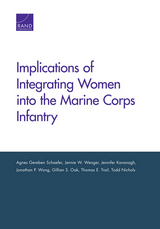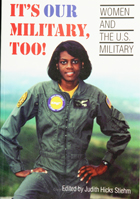
Drawing on interviews with over one hundred veterans of the movement, Vina A. Lanzona explores the Huk rebellion from the intimate and collective experiences of its female participants, demonstrating how their presence, and the complex questions of gender, family, and sexuality they provoked, ultimately shaped the nature of the revolutionary struggle.



Why do women go to war? Despite the reality that female combatants exist the world over, we still know relatively little about who these women are, what motivates them to take up arms, how they are utilized by armed groups, and what happens to them when war ends. This book uses three case studies to explore variation in women’s participation in nonstate armed groups in a range of contemporary political and social contexts: the civil war in Ukraine, the conflicts involving Kurdish groups in the Middle East, and the civil war in Colombia. In particular, the authors examine three important aspects of women’s participation in armed groups: mobilization, participation in combat, and conflict cessation. In doing so, they shed light on women’s pathways into and out of nonstate armed groups. They also address the implications of women’s participation in these conflicts for policy, including postconflict programming. This is an accessible and timely work that will be a useful introduction to another side of contemporary conflict.

In the last twenty-five years the U.S. military has seen the abolition of women's separate corps, the appointment of women generals, and an unprecedented increase in the ratio of women to men. Also, women are now permitted to serve on combat planes and ships. Despite these developments, most civilians know very little about women in the military.
This collection includes unusual accounts by women on active duty, retired officers, women who have worked for the armed forces in a civilian capacity, and civilian academics. The book offers insights on a variety of pressing issues including minority women, lesbians, combat, the role of gender in weapons design, and the changing mission of the military.
Through personal accounts and commentaries, this book dispels many of the myths about women and the military and explores the reasons for the persistence of misconceptions in the face of increased female participation. This comprehensive effort will be of interest to anyone who wants to know the truth about women in the armed forces and will be a wake-up call to women who feel that the military is irrelevant to them.
Contributors: Rhonda Cornum, Virginia Solms, Billie Mitchell, Connie L. Reeves, Brenda L. Moore, Nina Richman-Loo, Rachel Weber, Lucinda Joy Peach, M. C. Devilbiss, Carol Burke, Susan Jeffords, Miriam Cooke.

Women have been actively involved the United States military for more than fifty years, but the ban on their participation in combat remains a hotly debated issue. In this provocative book Lorry M. Fenner, an active-duty Air Force intelligence officer, calls for opening all aspects of military service to women. Marie deYoung, a former Army chaplain, argues that keeping women out of combat is in the best interests of both sexes and crucial to the effectiveness of the military as a whole.
Fenner bases her argument for inclusion of women on the idea that democracies require all citizens to compete in public endeavor and share in civic obligation. She contends that, historically, reasons for banning women from combat have been culturally biased. She argues that membership in a combat force should be based on capability judged against appropriate standards. Moreover, she maintains that excluding women hampers the diversity and adaptability that by necessity will characterize the armed forces in the twenty-first century.
In contrast, deYoung declares that the different physical fitness standards for men and women would, in combat, lower morale for both sexes and put women at risk of casualty. Further, she contends that women have neither the physical or emotional strength to endure the overall brutality of the combat experience. She also asserts that calls for lifting the combat ban are politically motivated and are inconsistent with the principles of American democracy and the mission of national defense.
With each author responding to the views of the other, their exchange offers a valuable synthesis of the issues surrounding a longstanding debate among policymakers, military personnel, and scholars of both military history and women’s studies.
READERS
Browse our collection.
PUBLISHERS
See BiblioVault's publisher services.
STUDENT SERVICES
Files for college accessibility offices.
UChicago Accessibility Resources
home | accessibility | search | about | contact us
BiblioVault ® 2001 - 2024
The University of Chicago Press









